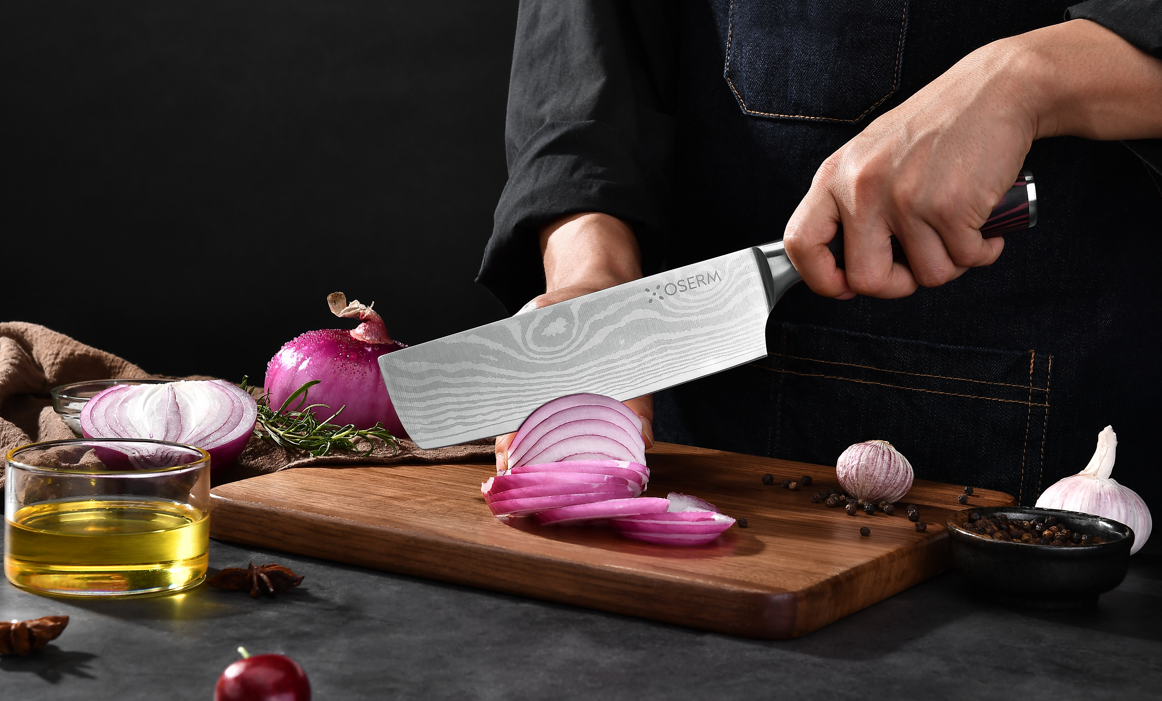Today, we’re going on a cultural journey, setting sail from our familiar shores to the Land of the Rising Sun, Japan. Our focus? A staple tool that holds an eminent position in Japanese cooking – the Japanese Chef Knife.
First, let’s dispel any mystique around this formidable kitchen tool. A Japanese chef knife, or “Gyuto” as it is traditionally known, isn’t just for professional chefs. If you have a passion for cooking and a taste for precision, this knife can revolutionize your kitchen experience.
Why Choose a Japanese Chef Knife?
Japanese chef knives are world-renowned for their exceptional craftsmanship, razor-sharp edges, and superior longevity. Here’s why they stand out:
- Craftsmanship: Japanese chef knives are not mass-produced items but works of art, forged by skilled artisans. Their crafting process involves many meticulous steps that ensure the blade’s sharpness and durability.
- Edge Sharpness: Japanese knives are known for their super sharp edges. This is due to the harder steel used and the thin, precise angle at which they are sharpened. It allows for clean, precise cuts, enhancing the aesthetics and flavor profile of your food.
- Lightweight: Despite their strength, Japanese knives are typically lighter, making them easier to handle. This attribute reduces hand fatigue and allows for more control during intricate tasks.
- Longevity: Properly maintained, a Japanese chef knife can last for decades. They are a worthwhile investment, a legacy that you can pass down to future generations of passionate home cooks.
Types of Japanese Chef Knives
When venturing into the realm of Japanese chef knives, it can be daunting due to the variety. But fear not, let’s explore a few key types:
- Gyuto: Equivalent to a western-style chef’s knife, the Gyuto is a versatile blade perfect for slicing, chopping, and dicing.
- Santoku: Another all-purpose knife, but shorter and with a flatter blade than the Gyuto. Santoku excels at slicing, dicing, and mincing.
- Nakiri: A knife with a straight, thin blade specifically for chopping vegetables.
- Yanagiba: Ideal for slicing raw fish, the Yanagiba is the traditional sushi knife.
- Deba: A heavy knife used for filleting fish and other heavy-duty tasks.
As you consider your first Japanese chef knife, the Gyuto or Santoku would be a good starting point given their versatility.
Maintenance
A Japanese chef knife requires proper care and maintenance. Here are a few tips:
- Cleaning: Always clean your knife manually with warm soapy water. Never put it in a dishwasher. Dry it immediately to prevent rusting.
- Storage: Store your knife in a knife block, magnetic strip, or a sheath to protect the blade.
- Sharpening: Use a whetstone to sharpen your knife when necessary. Follow the manufacturer’s guidelines to maintain the edge’s correct angle.
Wrapping Up
Investing in a Japanese chef knife may initially seem like a big leap, but the enhanced precision, artistry, and enjoyment you’ll derive from your culinary endeavors can be well worth the investment. Take your time to understand your cooking needs and preferences, and you’re sure to find a knife that feels like an extension of your hand.
Remember, a sharp knife is a safe knife. So, happy cooking, and may your kitchen endeavors be ever so delightful with your new Japanese Chef Knife!
As you embark on the journey to master the art of keeping your Japanese chef knife razor-sharp, consider exploring OSERM’s range of high-quality knives. OSERM is dedicated to bringing the finest craftsmanship to your kitchen, ensuring that every knife not only meets but exceeds your expectations in terms of sharpness, durability, and precision. Visit www.oserm.com to discover a collection that blends tradition with modern innovation.

Comments
One response to “Breaking Down the Basics: Your Simple and Comprehensive Guide to Choosing, Using and Loving Your First Japanese Chef Knife”
Hi, this is a comment.
To get started with moderating, editing, and deleting comments, please visit the Comments screen in the dashboard.
Commenter avatars come from Gravatar.